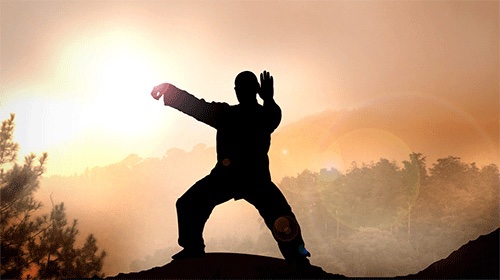Chinese medical chi kung

With roots in ancient Chinese culture dating back more than 4,000 years, a wide variety of qigong forms have developed within different segments of Chinese society: in traditional Chinese medicine for preventive and curative functions, in Confucianism to promote longevity and improve moral character, in Daoism and Buddhism as part of meditative practice, and in Chinese martial arts to enhance fighting abilities. Contemporary qigong blends diverse and sometimes disparate traditions, in particular the Daoist meditative practice of "internal alchemy" (Neidan), the ancient meditative practices of "circulating qi" (Xing qi) and "standing meditation" (Zhan zhuang), and the slow gymnastic breathing exercise of "guiding and pulling" (Dao yin). Traditionally, knowledge about qigong was passed from adept master to student in elite unbroken lineages, typically with secretive and esoteric traditions of training and oral transmission, and with an emphasis on meditative practice by scholars and gymnastic or dynamic practice by the working masses.
Qigong comprises a diverse set of practices that coordinate body, breath, and mind based on Chinese philosophy. Practices include moving and still meditation, massage, chanting, sound meditation, and non-contact treatments, performed in a broad array of body postures. Qigong is commonly classified into two foundational categories: 1) dynamic or active qigong (dong gong), with slow flowing movement; and 2) meditative or passive qigong (jing gong), with still positions and inner movement of the breath. From a therapeutic perspective, qigong can be classified into two systems: 1) internal qigong, which focuses on self-care and self-cultivation, and; 2) external qigong, which involves treatment by a therapist who directs or transmits qi.
As moving meditation, qigong practice typically coordinates slow stylized movement, deep diaphragmatic breathing, and calm mental focus, with visualization of guiding qi through the body. While implementation details vary, generally qigong forms can be characterized as a mix of four types of practice: dynamic, static, meditative, and activities requiring external aids.
- Dynamic practiceInvolves fluid movement, usually carefully choreographed, coordinated with breath and awareness. Examples include the slow stylized movements of T'ai chi ch'uan, Baguazhang, and Xing yi. Other examples include graceful movement that mimics the motion of animals in Five Animals (Wu Qin Xi qigong), White Crane, and Wild Goose (Dayan) Qigong. As a form of gentle exercise, qigong is composed of movements that are typically repeated, strengthening and stretching the body, increasing fluid movement (blood, synovial, and lymph), enhancing balance and proprioception, and improving the awareness of how the body moves through space.
- Static practiceInvolves holding postures for sustained periods of time. In some cases this bears resemblance to the practice of Yoga and its continuation in the Buddhist tradition. For example Yiquan, a Chinese martial art derived from xingyiquan, emphasizes static stance training. In another example, the healing form Eight Pieces of Brocade (Baduanjin qigong) is based on a series of static postures.
- Meditative practiceUtilizes breath awareness, visualization, mantra, chanting, sound, and focus on philosophical concepts such as qi circulation, aesthetics, or moral values. In traditional Chinese medicine and Daoist practice, the meditative focus is commonly on cultivating qi in dantian energy centers and balancing qi flow in meridian and other pathways. In various Buddhist traditions, the aim is to still the mind, either through outward focus, for example on a place, or through inward focus on the breath, a mantra, a koan, emptiness, or the idea of the eternal. In the Confucius scholar tradition, meditation is focused on humanity and virtue, with the aim of self-enlightenment.
- Use of external agents Many systems of qigong practice include the use of external agents such as ingestion of herbs, massage, physical manipulation, or interaction with other living organisms. For example, specialized food and drinks are used in some medical and Daoist forms, whereas massage and body manipulation are sometimes used in martial arts forms. In some medical systems a qigong master uses non-contact treatment, purportedly guiding qi through his or her own body into the body of another person.
Sources:
- The Origin of Modern Pranic Healing and Arhatic Yoga by Master Choa Kok Sui
